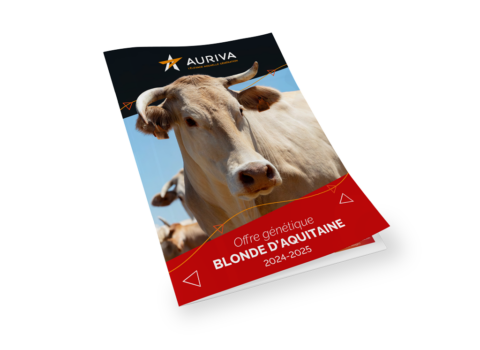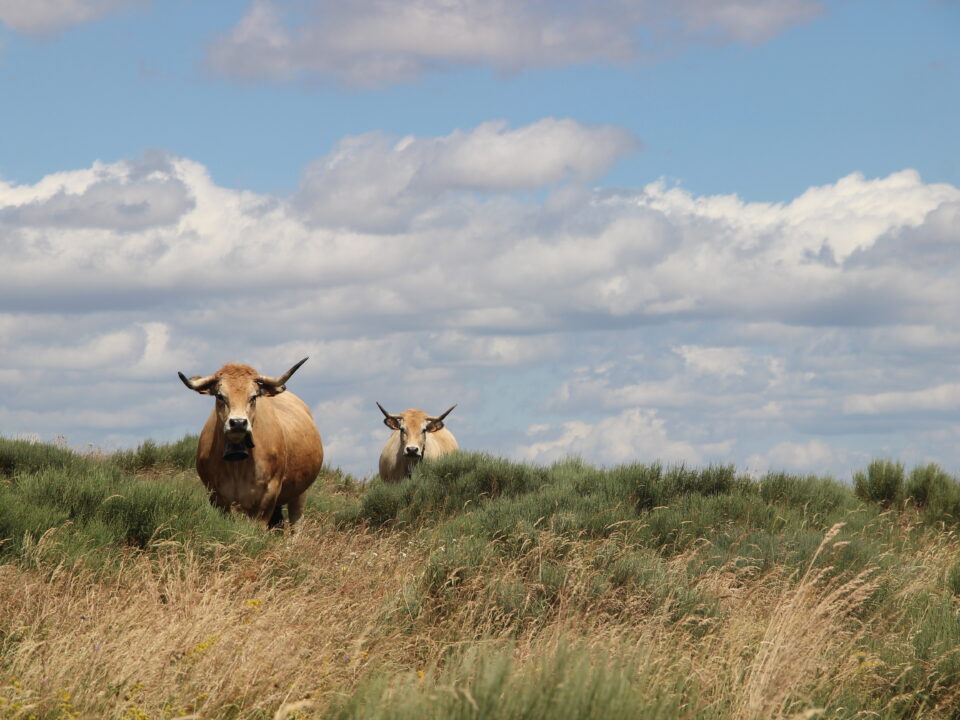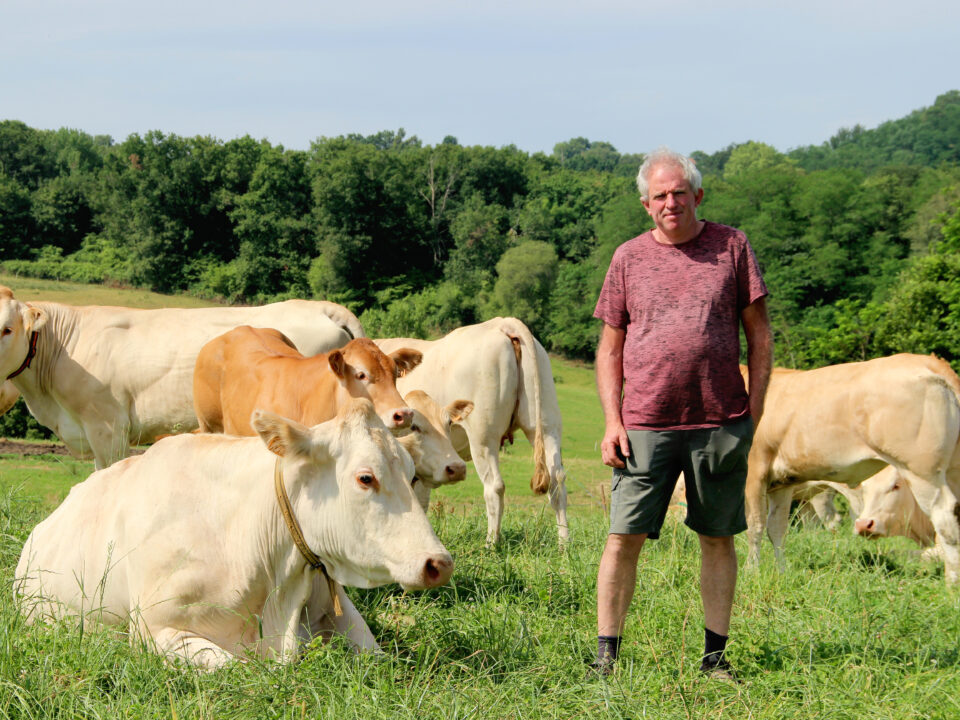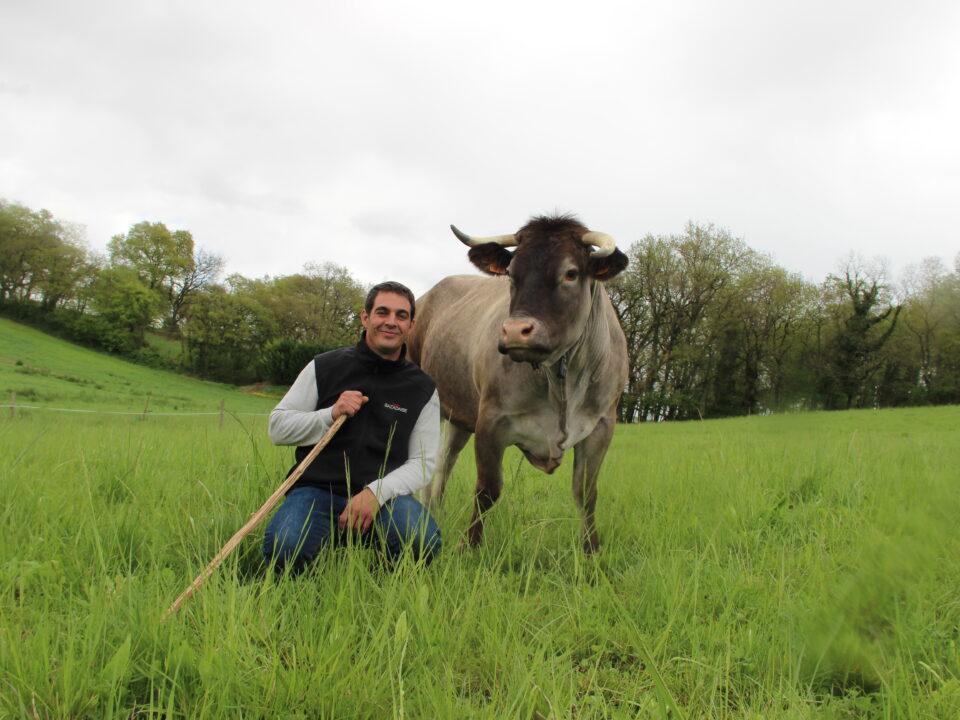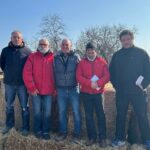
Trip to Hungary from February 9 to 12, 2025
14 April 2025
Genetic progress in the Aubrac breed: focus on embryo transplantation
1 July 2025Breeding practices: how do our Irish neighbors do it?

Ireland, renowned for its vast green meadows, has developed a suckler cattle breeding system based largely on grass and optimized resource management. Our Génétique Viande team travelled to Ireland to discover the practices of Irish breeders and their approach to genetic selection and sustainability. Here’s a look back at this immersion in the heart of Irish suckler farming!
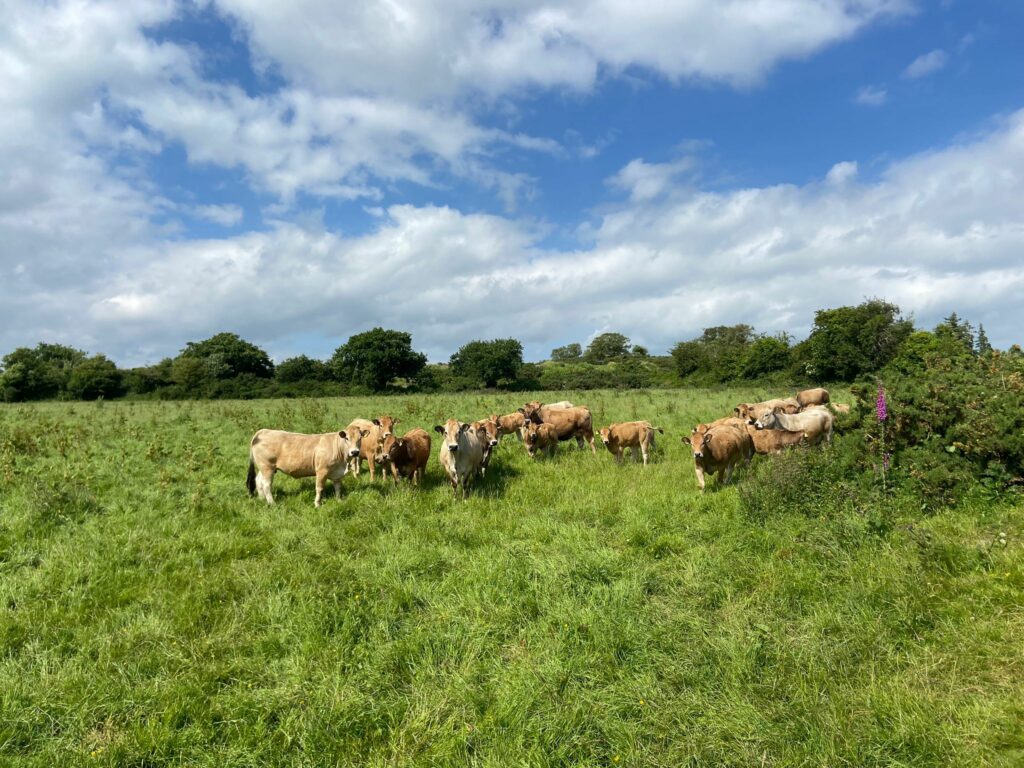
Ireland, champion of extensive livestock farming
Ireland is a major player in European beef production. In 2019, it ranked 4ᵉ in Europe with 10.4% of total production. The sector accounts for 27% of the country’s agricultural value, or €2.3 billion (Ministry of Agriculture, 2022).
Its model is also based on a strong image of sustainability and natural production, thanks in particular to the “Origin Green” initiative, which promotes environmentally-friendly agriculture.
Ireland benefits from a temperate oceanic climate that allows grass to grow almost all year round. 95% of suckler cattle feed is based on fresh or harvested grass, which represents an average of 220 days of total grazing (day and night) each year, more than in most other European countries (Idele, 2021).
Breeders organize calving in spring to coincide with the period of strong growth, favoring optimal calf growth while reducing production costs.
Beef production in Ireland: some key figures
According to the annual review published by the Irish Department of Agriculture, the total number of cattle slaughtered in Irish abattoirs amounted to 1.87 million in 2023, down 2.2% on the previous year (of which 37% were JBs, 30% heifers, 23% cows, 8% bulls and 2% calves).
The average carcass weight for a JB in 2023 was 347 kg, with an average price per kg carcass for a JB R3 of €4.96/kg, up 4% on 2022. In comparison with France over 2023, the average price for a JB R3 was €5.27/kg (Idele, 2024).
Irish breeders prefer precocious animals with moderate adult weights, in line with market demand. Carcasses generally weigh between 280 and 380 kg. This weight range ensures an adequate proportion of quality cuts and optimizes profitability for the various players in the Irish production and distribution chain. It is important to note that significant importance is attributed to carcass weight in Irish valuations, since it represents 41% of the Terminal Index (ICBF, 2019).
In terms of exports, nearly €3 billion worth of beef, or 475,600 tonnes, was exported in 2023. The top three export destinations were the UK (212,778 tonnes – €1,383 million), France (58,487 tonnes – €371 million) and Italy (28,078 tonnes – €239 million).
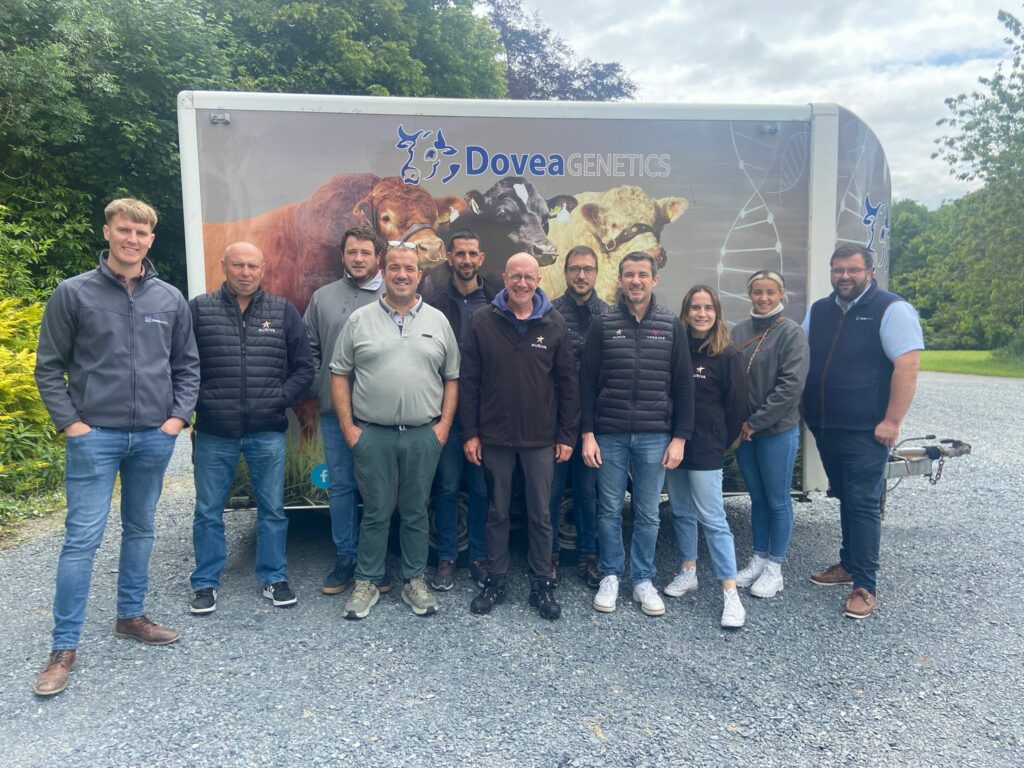
Genetic Selection in Ireland
The Irish Cattle Breeding Federation (ICBF) in Ireland, the technical institute for Irish cattle breeding, publishes indexes based on multi-characteristic and multi-racial evaluation (ICBF, 2019).
This approach is essential given the structure of the Irish suckler herd, where a small number of “purebred” herds provide breeding bulls for herds of mainly crossbred commercial cows. In these herds, the use of foreign AI sires is significant, and many breeding bulls are also imported from abroad. As part of its technical trip, the Pôle Viande had the opportunity to meet one of the country’s three insemination companies: Dovea Genetics, where several AURIVA bulls are in the catalog.
The €urostar is a profitability-oriented index for Irish suckler cattle divided into two categories: the Terminal Index and the Renewal Index. As its name suggests, the €urostar evaluates animals with a star rating ranging from 1 to 5 stars. This ranking indicates an animal’s genetic level within the population: 5 stars means that the animal is in the top 20% of the population, with each star representing 20% of the population.
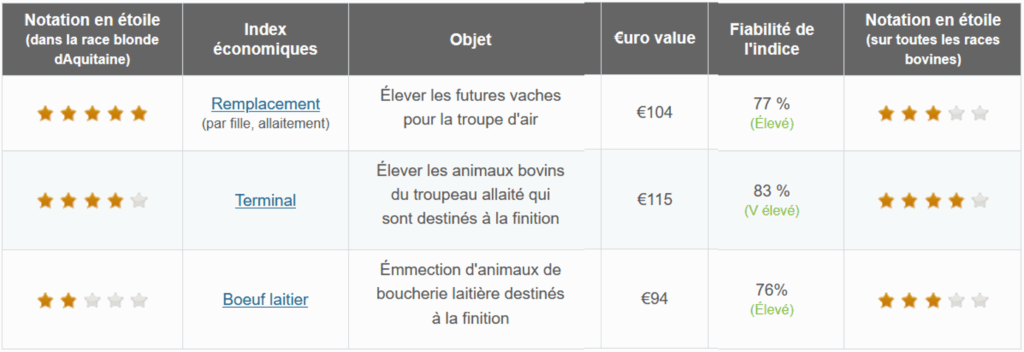
The importance of crossbreeding in Irish herds
Crossbreeding is widely used to improve herd quality and profitability. Around 60% of calves from suckler dams are crossbred. Few cows are bred purebred, and French breeds play a key role in the main selection nuclei: Limousine, Charolaise, Angus, Salers, Blonde and Aubrac.
These purebreds are used to produce animals for crossbreeding in so-called “commercial” herds. These herds are almost exclusively made up of crossbred animals, and seek to maximize the heterosis effect while combining the strengths of different breeds to better meet market requirements.
Blondes are appreciated for their weight and carcass yield, and highly developed Blanc Bleu or Limousin bulls are often used on Blondes to produce fine, muscular grazers. As for the Aubrac, it is mainly used by Irish breeders for its hardiness and fertility(Réussir Bovin Viande, 2015).
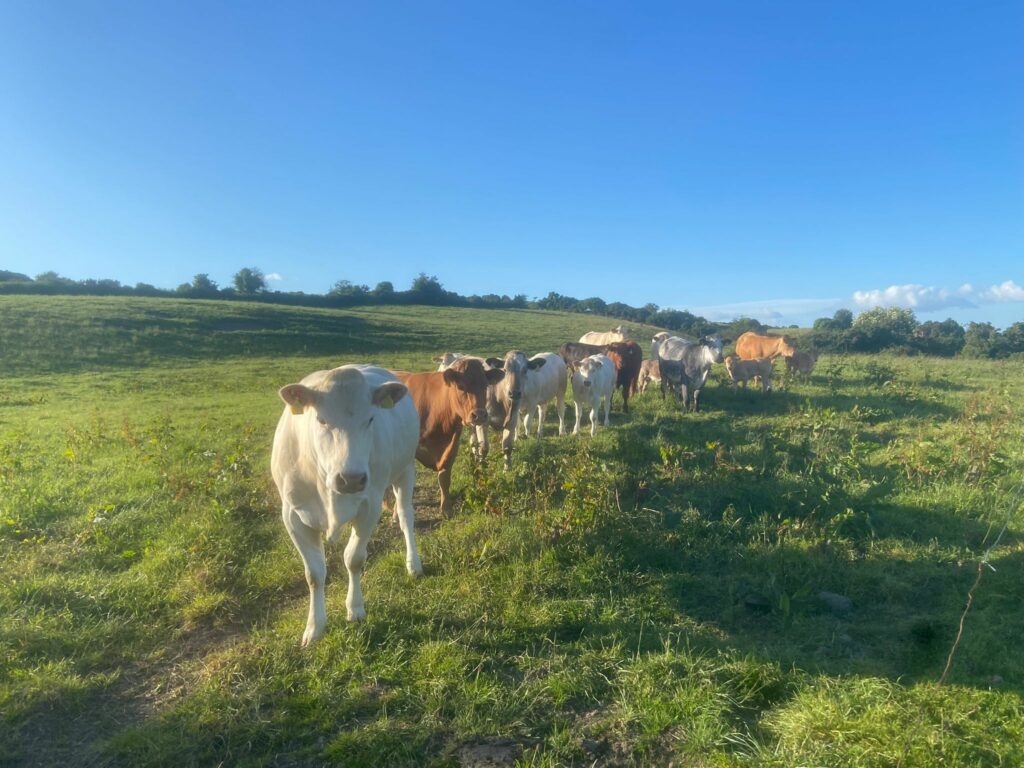
Dairy-meat crossbreeding is also widely used in Ireland, and has gained momentum in the dairy herd thanks to the Dairy Beef Calf Program, which encourages dairy farmers to fatten calves (Idele, 2021). For this type of crossbreeding, gestation period is an essential criterion for breeders. It must be short to maximize calving at the optimum period. A gestation period index is calculated by the ICBF and affixed to Irish catalogs of milk-meat crossbred bulls.
Environmental challenges and solutions
Irish agriculture accounts for 37% of the country’s greenhouse gas emissions, with methane from cattle making a significant contribution. What’s more, water quality is declining, and ammonia emissions exceed European limits. The problem is taken very seriously by the government, and the sector is under increasing pressure to move towards greater sustainability, notably via the new climate action plan adopted by the government. The aim is to reduce the agricultural sector’s GHG emissions by 20% by 2030, while maintaining a viable economic model (Ministry of Agriculture, 2022).
Genetics is one answer to these challenges, thanks in particular to the Irish Beef Data and Genomics Program (BDGP), a program launched in 2015 to reduce the intensity of GHG emissions by improving the quality, efficiency and genetic value of the national suckler herd through data collection and genotyping. As part of this project: 2.5 million animals have been genotyped, culminating in the publication in 2023 of the first assessment of gross enteric methane emissions from AI bulls by the ICBF.
In the suckling sector, France is also working on a project to reduce enteric methane emissions on cattle farms, notably with the METHANE 2030 project, of which Auriva is a partner. Auriva is conducting trials on Blonde d’Aquitaine cattle at the Qualités Maternelles station in Casteljaloux.
A family breeding model
The number of suckler cattle farms in Ireland is declining, partly as a result of farms converting to dairy farming. The average herd size is 18 cows, and the majority of farms are family-run or owned by two people. This structure favours the use of AI, with particular attention paid to ease of birth in the choice of breeding stock, as farmers have little time to devote to monitoring the animals.
The average farm size was 35 ha in 2019. However, land prices are an obstacle to farm expansion: €15,800/ha for permanent grassland and €28,000/ha for arable land on average in 2019. This agricultural land market also remains very small, with only 0.3% of SAU sold each year(Idele, 2021).
The Pôle Génétique Viande AURIVA-Elevage in Ireland
As part of this technical trip, the AURIVA Meat Genetics division had the opportunity to discover several Irish farms and organizations:
- ICBF progeny performance evaluation station
- Dovea Genetics station and laboratory
- Irish Aubrac Society, representative body for the Aubrac breed in Ireland
- Irish Blondes Cattle Society, representative body for the Blonde d’Aquitaine breed in Ireland
And many farm visits:
- Adrian BOURKE – Breeding purebred and crossbred Blondes d’Aquitaine
- Paul RYAN – Dairy breeding with terminal cross (Hereford and Angus)
- DELANEY FARM – Dairy farming with terminal crosses (Hereford, Angus, Limousin)
- Lattin Blondes – Breeding purebred and crossbred Blondes d’Aquitaine
- Glenwood Blondes – Breeding 100% purebred Blondes d’Aquitaine
- DEEREPARK – 100% purebred Aubrac cattle
- Johnstown Aubracs and Blue Texels – 100% purebred Aubracs and Blue Texels (sheep)
Sources
Bonaiti, B., & Boichard, D. (1995). Accounting for foreign information in genetic evaluation. Interbull Bulletin, 11.
Schaeffer, L. R. (1994). Multiple-country comparison of dairy sires. Journal of Dairy Science, 77, 2671-2678.
Institut de l’Élevage. (2021). Ireland’s dairy and meat industries: still conquering despite Brexit and environmental constraints. Consulté sur https://idele.fr/?eID=cmis_download&oID=workspace%3A%2F%2FSpacesStore%2Ff38fc674-acf9-4120-8821-e50cb7e71667&cHash=60d1b0e62a58b0346b04065336635eed
Tema Agriculture & Terroirs. (2018). Genetics as a response to environmental challenges. Retrieved from https://www.tema-agriculture-terroirs.fr/cultivar-elevage/genetique/la-genetique-comme-reponse-aux-enjeux-environnementaux-880476.php
Réussir Bovins Viande. (2015). Ireland’s must-see crossroads. Visit https://www.reussir.fr/bovins-viande/le-croisement -toujours-incontournable-en-irlande
Irish Cattle Breeding Federation (ICBF). (2019). Incorporation of Foreign EBVs. Retrieved from https://www.icbf.com/wp-content/uploads/2019/03/Incorporation-of-Foreign-EBVs.pdf
Irish Cattle Breeding Federation (ICBF). (2019). Beef Evaluation Document. Retrieved from https://www.icbf.com/wp-content/uploads/2019/05/Beef-Evaluation-Document.pdf
Ministry of Agriculture and Food Sovereignty. (2022). Ireland. Retrieved from https://agriculture.gouv.fr/irlande
Government of Ireland. (2024). Annual Review and Outlook for Agriculture, Food and the Marine 2024. Retrieved from https://www.gov.ie/en/press-release/fac27-annual-review-and-outlook-for-agriculture-food-and-the-marine-2024-published/
Institut de l’Élevage. (2024). Key figures for cattle 2024 – Milk and meat production. Retrieved from https://idele.fr/detail-article/chiffres-cles-bovins-2024-productions-lait-et-viande
